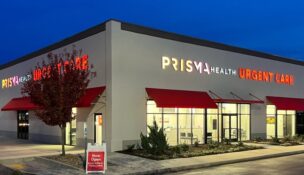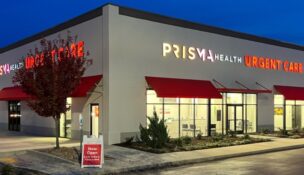Experts in law, human resources offer return-to-work advice
Molly Hulsey //May 19, 2020//
While businesses across the state expressed that covering payroll was one of their greatest challenges, according to a recent S.C. Chamber of Commerce survey, at least 90% of those who had dismissed or furloughed employees in response to the new coronavirus intend to welcome at least half of them back within three months.
Legal and human resource experts emphasize that clear communication with employees and an honest assessment of the economic and health risks following reopening are critical to avoid COVID-19 infections and liability issues in the workplace.
Stephen Mitchell, Fisher Phillips:
Stephen Mitchell, managing partner of Columbia’s Fisher Phillips office, said employers must be in constant communication with their workforce. All businesses should have strategies in print charting day-to-day protocol and their response to confirmed COVID-19 cases in the workplace.
“They need to be ready to sell or to make sure that their employees understand why they are open and how they are protecting them,” Mitchell said. “There are going to be all sorts of outside forces that are going to undermine that, whether it’s attorneys trying to generate lawsuits or labor unions trying to organize a facility, and there are going to be a lot of people second-guessing employers.”
Employees need to know that their employer not only has developed a comprehensive plan for keeping them safe as they return to their offices but that she or he will continue to execute that strategy as time goes on.
“It’s extremely important to have a plan to stay vigilant and continue to monitor employees for symptoms … through temperature-taking and also instructing them not to show up if they’re sick, so that it’s very clear,” Mitchell said. “I think that protects them somewhat from liability to the extent that they’re taking people’s temperatures. There’s not going to be an argument that they are telling people that they need to come to work no matter what.”
In any business, he advises employers to allow employees with underlying health conditions who are able to work from home to continue working from home.
“Now I do think that it’s trickier when you have a manufacturing setting where people can’t work from home,” Mitchell said. “There are a number of employees that are taking temperature tests, and there are a number of legal issues that need to be considered there, including privacy (and) wage and hour concerns, dependent on how long it takes people to process through a line.”
As new unemployment insurance stipulations arise, including the ability to restrict unemployment benefits after an employee refuses to return to an offered position, employers must keep communication channels clear, he said.
David Evette, QBS
State-specific social distancing measures and Centers for Disease Control and Prevention guidelines should be at the crux of any reopening strategy, according to David Evette, co-founder and CEO of Travelers Rest human resources company Quality Business Solutions.
QBS Inc. plans to maintain working-from-home practices for its employees for a long as possible.
“We’re kind of going with the Phase II operation that the White House has put out there,” Evette said the week of May 8. “If it’s still conducive for them (QBS employees) to work from home and still be as productive or almost as productive as at the office, we want to continue to do that. I think for us, we’re probably in that 30- to 45-day window for coming back.”
Evette said he was waiting on a shipment of hand sanitizer while also setting aside a store of personal protective equipment so employees can have a supply of five disposable masks per week.
Early in May, QBS also sent out a 10-question survey to employees, probing symptoms such as a fever or coughing over the past week to see if individuals were ready to return once office doors reopened. When dealing with those who did not respond positively on the test, Evette said confidentiality and working with the employee through specific questions is key.
To cut down on employee contact, employers could discourage congregation around the water cooler or request employees bring their own food instead of hosting company meals or lunch meetings.
Jeffrey Allen, Burr Forman McNair
As some businesses continue to access the Paycheck Protection Program and other types of federal funding following the first onslaught of applicants, Jeffrey Allen, a partner at Columbia’s Burr Forman McNair office, underscores that companies need to reassess if they can sustain payroll or headcount before June 30 or need PPP funding to keep operating.
“Businesses need to evaluate whether they need the Paycheck Protection funds in order to support their operations,” Allen said. “There was a large rush initially because of funding where everyone wanted to participate in the program, relying on what they saw as the uncertainty of the coronavirus crisis going forward.”
Those in doubt should consider employee retention tax credits or Social Security deferral options instead, he said, especially as the Small Business Administration begins to crack down on businesses who didn’t need the PPP to stay afloat during the pandemic.
All businesses are eligible for the tax credits or the Social Security deferral program, which have no repayment obligations like the PPP.
“The employers could start as of March 27 deferring payment of the employer’s share of Social Security through the end of the year, with 50% to be paid by Dec. 31 in 2021 and 50% to be paid Dec. 31, 2022,” Allen said. “That option is out there for folks. They can take advantage of that even if they have applied for the Paycheck Protection loan and, if funded, they can continue taking advantage of it until the time the lender says that loan is forgiven.”
T

















